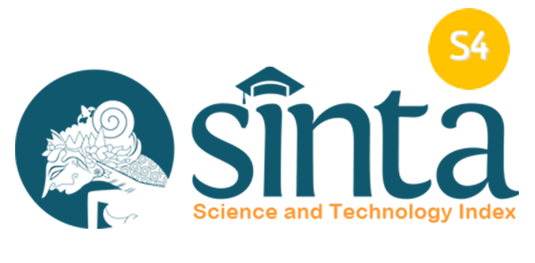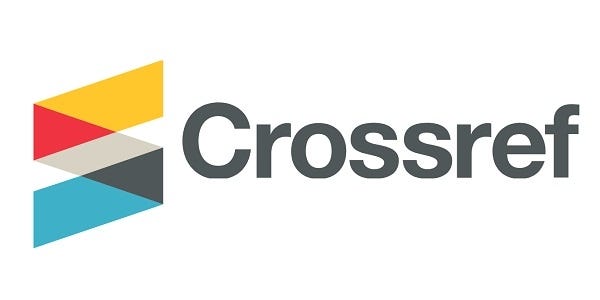The REAP Strategy in Action: EFL Students’ Perceptions and Reading Comprehension Enchantment
DOI:
https://doi.org/10.36663/tatefl.v6i1.914Keywords:
EFL, REAP, Reading Comprehension, Reading Achievement, PerceptionAbstract
REAP strategy offers a systematic approach to address challenges face by the students in reading activity. The strategy is divided into managable stages: Reading, Encoding, Annotating, and Pondering. This study aimed to identifying students’ perceptions of the Implementation of REAP strategy on their reading comprehension among 11th-grade EFL grade students in Palembang through a qualitative approach. The interview method chosen was semi-structured to give more insight into the research. The data was collected from students' perceptions of the implementation of the reap strategy which was analyzed using thematic analysis which found that the REAP strategy facilitates understanding of text, REAP encourages content review and retention, REAP promotes comprehension by rephrasing key ideas, REAP increases engagement and attention during reading, REAP facilitates personal connections and critical thinking, lengthy process of REAP and time-consuming implementation of REAP. The REAP strategy effectively improved students’ reading comprehension and critical thinking skills. However, the challenges of its time-consuming and multi-step nature suggest the need for adjustments to its implementation. Educators should consider providing additional guidance during the more complex stages, such as annotation and pondering, and incorporating time management strategies to make the process more efficient and accessible for all learners.
Downloads
References
Adelini, A., Harida, E. S., & Siregar, F. R. (2018). The effect of peer tutoring strategy on students’ reading comprehension in narrative text at grade X SMA Negeri 8 Padangsidimpuan. TAZKIR: Jurnal Penelitian Ilmu-Ilmu Sosial Dan Keislaman, 4(1), 191–204. DOI: https://doi.org/10.24952/tazkir.v4i1.1091
Amelia, K. R., Eva Saptarina, R., Nery, R., Novia, F., Sartika, D., & Asmara, R. (2024). Utilizing REAP strategy (read-encode-annotate-ponder) to enhance learners’ reading comprehension across varied reading habits. ELT Echo : The Journal of English Language Teaching in Foreign Language Context, 9(2), 94–106. DOI: https://doi.org/10.24235/eltecho.v9i2.18585
Andrade, C. (2021). The inconvenient truth about convenience and purposive samples. Indian Journal of Psychological Medicine, 43(1), 86–88. https://doi.org/10.1177/0253717620977000 DOI: https://doi.org/10.1177/0253717620977000
Ariyani, Y. N. (2021). The efficacy of REAP (Read-Encode-Annotate-Ponder) toward teaching of reading viewed from students self -esteem. Indonesian Journal of Islamic Psychology, 3(1), 95–116.
Braun, V., & Clarke, V. (2006). Using thematic analysis in psychology. Qualitative Research in Psychology, 3(2), 77–101. https://doi.org/10.1191/1478088706qp063oa DOI: https://doi.org/10.1191/1478088706qp063oa
Creswell, J., & Guetterman, T. (2020). Educational Research: Planning, Conducting, and Evaluating Quantitative and Qualitative Research, 6th Edition (6th ed.). Pearson
Creswell, J. W. (2014). Research design : qualitative, quantitative, and mixed methods approaches / John W. Creswell. In Research Defign: Qualitative, Quantitative, and Mixed M ethods Approaches (4th ed.). Sage.
Dewi, I. A. G. P. R., Marhaeni, A. A. I. N., & Paramartha, A. A. G. Y. (2018). The effect of REAP strategy on reading comprehension of the eight grade students. International Journal of Language and Literature, 3(3), 112–120.
Eanet, M. G., & Manzo, A. V. (1976). REAP - A atrategy for improving reading/writing/study skills. Journal of Reading, 19(8), 647–652.
Juliari, I. G. A. I. T., Susila, I. K. D., & Juliani, N. P. (2024). School literacy movement and parents’ motivation on EFL students’ reading interest. The Art of Teaching English as a Foreign Language (TATEFL), 5(2), 196–206. https://doi.org/10.36663/tatefl.v5i2.906 DOI: https://doi.org/10.36663/tatefl.v5i2.906
Nuroktravianti, N. S., Ariyani, A., & Asma, N. (2022). Meningkatkan kemampuan membaca siswa dalam teks hortatory exposition melalui teknik R.E.A.P (Reading, Encoding, Annotating, and Pondering) SMK PGRI 1 Gantar Kab. Indramayu Jawa Barat. Jurnal Pemikiran Dan Pengembangan Pembelajaran, 4(2), 10–17.
Rahmawati, R., Supardi, I., & Bunau, E. (2015). Using Read, Encode, Annotate and Ponder (REAP) strategy in teaching reading comprehension. Jurnal Pendidikan Dan Pembelajaran Khatulistiwa, 4(6), 1–12.
Ramdhani, P. E., & Pusparini, R. (2022). REAP (Read, Encode, Annotate, and Ponder) strategy combined with mind mapping to facilitate students’ reading comprehension. ELTIN Journal: Journal of English Language Teaching in Indonesia, 10(2), 139–150.
Renette, R. (2016). Using REAP (Read, Encode, Annotate, Ponder) in teaching reading. Proceedings of ISELT FBS Universitas Negeri Padang, 278–282.
Rumapea, E. L. B., Silalahi, T., & Siahaan, T. (2022). The implementation of Read, Encode, Annotate, Ponder (REAP) strategy in teaching students’ reading. Budapest International Research and Critics Institute (BIRCI-Journal), 5(3), 22826–22835.
Sholeh, A., & Osu, M. F. (2021). Read, Encode, Annotate and Ponder (REAP) on reading comprehension. Proceedings of the 2nd Annual Conference on Social Science and Humanities (ANCOSH 2020), 92–95. https://doi.org/10.2991/assehr.k.210413.022 DOI: https://doi.org/10.2991/assehr.k.210413.022
Siregar, F. R., Sustri Harida, E., Miranti, Lubis, R. F., & Rambe, S. L. V. (2023). The implementation of REAP strategy to improve students reading comprehension of analytical expositional text in digital era. KnE Social Sciences, 2023, 208–215. https://doi.org/10.18502/kss.v8i4.12901 DOI: https://doi.org/10.18502/kss.v8i4.12901
Tuti, T., Sijono, S., Elisa, H., & Meko, S. S. (2023). The role of REAP (Read, Encode, Annote, and Ponder) technique in teaching reading comprehension at one state senior high school of Sintang. Journal of English Educational Study (JEES), 6(1), 60–73. https://doi.org/10.31932/jees.v6i1.2256 DOI: https://doi.org/10.31932/jees.v6i1.2256
Downloads
Published
How to Cite
Issue
Section
License
Copyright (c) 2025 Putri Ramadani Nur Rahman, Annisa Astrid, Fitri Alya Okta Sukma

This work is licensed under a Creative Commons Attribution-ShareAlike 4.0 International License.
License Terms
- Attribution — You must give appropriate credit, provide a link to the license, and indicate if changes were made. You may do so in any reasonable manner, but not in a way that suggests the licensor endorses you or your use.
- ShareAlike — If you remix, transform, or build upon the material, you must distribute your contributions under the same license as the original.
- No additional restrictions — You may not apply legal terms or technological measures that legally restrict others from doing anything the license permits.

















